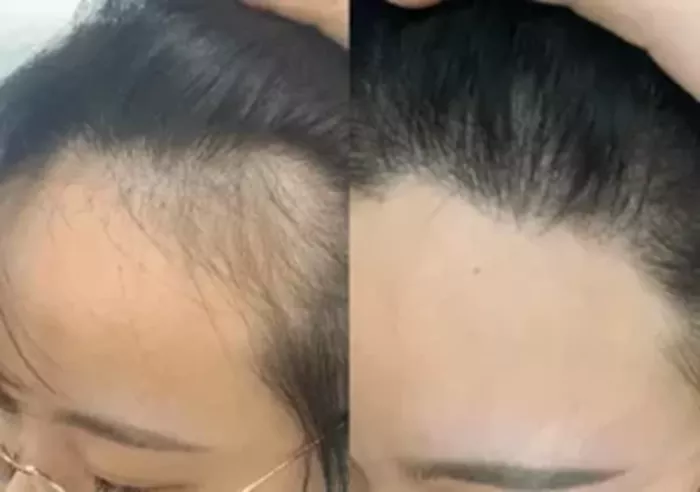The donor area is typically the back or sides of the scalp, where hair follicles are resistant to balding due to genetic factors. During a hair transplant, these follicles are extracted and transplanted to thinning or bald areas. Proper care of the donor site is crucial to ensure minimal scarring, faster healing, and optimal hair regrowth. Neglecting post-operative care can lead to complications such as infections, prolonged redness, or poor follicle survival.
Immediate Post-Operative Care for the Donor Area
The first 48 hours after surgery are critical for donor area recovery. Patients must follow strict guidelines to prevent trauma to the extraction sites.
Keeping the area clean is essential to avoid bacterial infections. Gently washing with a mild, surgeon-recommended shampoo helps remove blood clots without disturbing the grafts.
Avoiding direct pressure on the donor zone prevents dislodging newly forming tissues. Sleeping with the head elevated reduces swelling and promotes blood circulation.
Managing Discomfort and Swelling
Mild pain and swelling are common after the procedure. Over-the-counter pain relievers, as prescribed by the surgeon, can alleviate discomfort.
Applying cold compresses around (not directly on) the donor area helps reduce inflammation. However, excessive cold exposure should be avoided to prevent tissue damage.
Patients should refrain from strenuous activities for at least a week, as increased blood pressure can worsen swelling or cause bleeding.
Promoting Healing and Minimizing Scarring
The donor area heals differently depending on the extraction method—FUE (Follicular Unit Extraction) or FUT (Follicular Unit Transplantation).
For FUE, tiny puncture wounds require gentle care. Using antibiotic ointments prevents infections while keeping the area moisturized aids faster recovery.
In FUT cases, where a strip of scalp is removed, keeping the sutured area dry and clean is vital. Silicone gel sheets or scar-reducing creams may be recommended to minimize linear scarring.
Encouraging Healthy Hair Regrowth in the Donor Area
Hair in the donor zone typically regrows within a few months, but certain measures can enhance the process.
A balanced diet rich in proteins, vitamins (especially biotin and vitamin E), and minerals like zinc supports follicle regeneration. Avoiding smoking and excessive alcohol consumption improves blood flow to the scalp.
Low-level laser therapy (LLLT) can stimulate dormant follicles, accelerating regrowth. However, consulting a specialist before starting any treatment is advisable.
Long-Term Care and Maintenance
Even after complete healing, the donor area requires attention to maintain scalp health.
Regular scalp massages improve circulation, ensuring nutrients reach the hair roots. Using sulfate-free shampoos prevents dryness and irritation.
Annual check-ups with a trichologist help monitor hair density and detect early signs of thinning. Patients should avoid excessive sun exposure, which can damage both transplanted and donor areas.
Addressing Common Concerns About Donor Area Recovery
Many patients worry about the visibility of the donor area after surgery, particularly with short haircuts. With modern FUE techniques, scarring is minimal and often undetectable once fully healed. However, proper aftercare plays a significant role in ensuring discreet results. Patients should avoid shaving their heads too soon, as this may reveal temporary redness or micro-scars that fade over time.
Another concern is shock loss—temporary shedding of hair around the extraction sites. This is a normal part of the healing process, and hair typically regrows within three to six months. Using gentle hair care products and avoiding harsh chemicals can minimize this effect.
When to Seek Medical Attention
While mild discomfort and redness are expected, certain symptoms require immediate consultation with a surgeon. Persistent pain, excessive swelling, pus discharge, or signs of infection (such as fever) should not be ignored. Delayed healing or unusual scarring may also indicate underlying issues that need professional evaluation.
Patients should follow up with their surgeon as scheduled to monitor progress. Early intervention can prevent complications and ensure the best possible recovery. By adhering to medical advice and maintaining patience, individuals can achieve a healthy, natural-looking donor area with long-lasting results.
Psychological Aspects of Donor Area Recovery
The healing process extends beyond physical recovery, as many patients experience emotional fluctuations during the post-transplant period. Temporary thinning or redness in the donor area may cause anxiety, particularly for those unfamiliar with normal recovery timelines. Practicing patience and maintaining realistic expectations are crucial, as final results may take 12-18 months to fully manifest. Support groups or counseling can help individuals cope with the psychological aspects of hair restoration. Keeping progress photos provides objective evidence of improvement when self-perception becomes distorted during the healing journey.
Conclusion
Proper recovery of the donor area after a hair transplant is as crucial as caring for the recipient site. Following post-operative instructions, maintaining hygiene, and adopting a healthy lifestyle significantly impact healing and hair regrowth. Patients who adhere to these guidelines experience minimal scarring, faster recovery, and better overall results. Consulting a hair restoration specialist ensures personalized care for optimal outcomes.
Related Topics:
- Where To Apply Minoxidil After Hair Transplant?
- How To Soften Scabs After Hair Transplant?
- Why Can’t You Eat Sugar After Hair Transplant?


